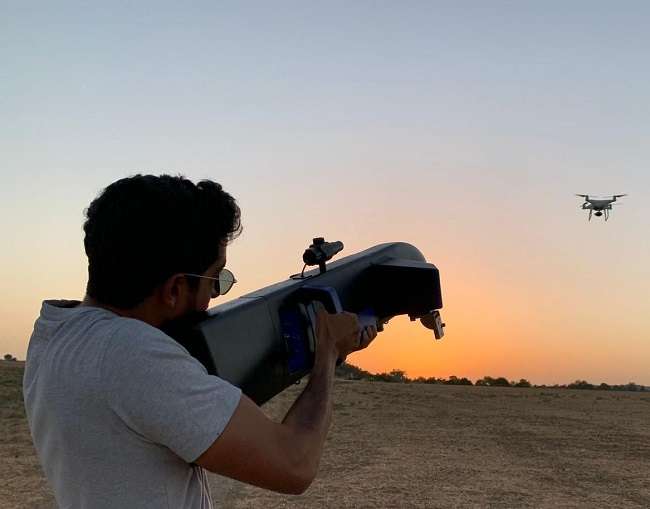Stopping a Bomber Drone: Is It Feasible?
A bombing drone, also known as an unmanned aerial vehicle (UAV), is designed to be a tool for drone strikes. It falls under the larger category of combat drones which includes drones used for target acquisition, surveillance, reconnaissance, and intelligence gathering. These drones are not fully autonomous and are instead controlled by humans in real-time from a remote location.
One of the advantages of using a drone for bombing is the reduction in weight compared to traditional aircraft. This is due to the fact that all the equipment and necessities needed for a human pilot are eliminated. The smaller size of the drone also makes it easier to maneuver and more difficult to detect.
Stealth bombers are a specific type of bombing drone that are designed to evade detection by radar and other surveillance systems. They achieve this by reducing their radar cross-section through a combination of design features and materials. Stealth bombers can be challenging to disable as they are designed to avoid detection, making them difficult to locate by traditional means.
Disabling a drone can be accomplished in several ways, such as jamming the communication between the drone and its operator, disrupting the GPS signals or by using directed energy weapons. Some tactics involve hacking the drone’s onboard computer and taking control of it or disabling it entirely. As drone technology advances, so do the methods used to disable them.
Myth of Drone Detection for Stealth Bombers
In an ideal world, a bomber drone should be able to achieve complete stealth or avoid detection by targets. Any compromise can lead to an unsuccessful mission. A good example of this is the US Air Force’s RQ-170, which crashed on the Iran-Afghanistan border in 2011, allowing Iran to reverse-engineer the technology and create the RQ-180.
Drone stealth often refers to the ability to avoid radar detection. While satellites can provide total visibility, the lack of flexibility in their operation limits their ability to detect drones. Radar technology works by bouncing signals off aircraft to indicate their position and provide tracking capability.
However, this becomes more challenging with drones, especially those with smaller footprints, which is why many designs focus on stealth. But the problem with this myth is that it does not consider radio frequencies.
Autonomous control requires frequency-based communication, and if these frequencies can be identified, they can be jammed with the right technology. Still, jamming the frequencies presents a higher threshold of difficulty when compared to using radar identification for drone detection.
Disabling a Bombing Drone: What’s Necessary?
You could theoretically classify the equipment here under drone detection and drone disruption categories. The former is concerned with identification while the latter focuses more on putting detected drones out of commission.
Advanced Drone Surveillance Technology: Monitoring Equipment
There is quite a bit that falls on in the monitoring equipment category. First, there are radio frequency analyzers that use antennas and a processor to both receive and analyze radio waves using a spectrum. In most cases, this provides make and model identification. More advanced RF analyzers can even provide drone and controller triangulation.
A microphone array may also be used to detect drone sound and provide direction calculation. Of course, the effectiveness begins to decline in more noisy environments.
Optical sensors boil down to cameras and may use infrared or thermal imaging. Of course, while they can help with identifying the drone and its payload, false alarm detections and terrible performance in low visibility conditions are to be expected.
Radars can’t be ignored here, and are used to detect a drone’s position and direction by sending out a signal and listening for the reflection. As indicated before, these are almost exclusively built for tracking larger objects.
RF Jammers
This is a countermeasure that sends an unmanageable amount of frequency-based energy after a drone, which prevents the controller signal from getting to the unit. When this happens, the drone may land, return to home, fall to the ground, or take off in a random direction.
The effect depends on the manufacturer. Note that this is a short-range countermeasure and there isn’t an accurate measure of the effect this technology is going to have on a drone.
Anti-Drone Gun
An anti-drone gun is exactly what it sounds like. These are meant to shoot at a UAV. The shots in this case may be physically destructive, or they may provide a burst of RF signal technology.
Phantom Technologies’ Droneshoot 800 is a perfect anti-drone gun example. It’s a jammer that neutralizes all drone communication, even including its GPS. With simultaneous disruptions of signal types such as GPS-L1, GPS-L2, ISM, etc., the Droneshoot 800 provides safe neutralization of all frequencies for up to 10 minutes on a single charge.
The design requires manual operations, and has a surprisingly flat learning curve, meaning using it is barely an inconvenience for newer operators. Targeting is no challenge, considering the gun carries a compass and GPS for its operator’s benefit.
EMP
An anti-drone EMP functions similarly to traditional EMP types, as it aims to disrupt electronic circuitry. By utilizing an antenna, the pulse can be accurately directed, minimizing any unintended harm. This technology effectively neutralizes drones, which have become an increasingly prevalent concern in the realm of security. The use of anti-drone EMPs is a proactive measure that helps ensure safety and protect against potential threats. Its targeted approach makes it a valuable tool for the military, law enforcement, and other organizations that require heightened surveillance and protection. As drone technology continues to advance, anti-drone EMPs represent an important defense against unauthorized and potentially dangerous drone activity.
